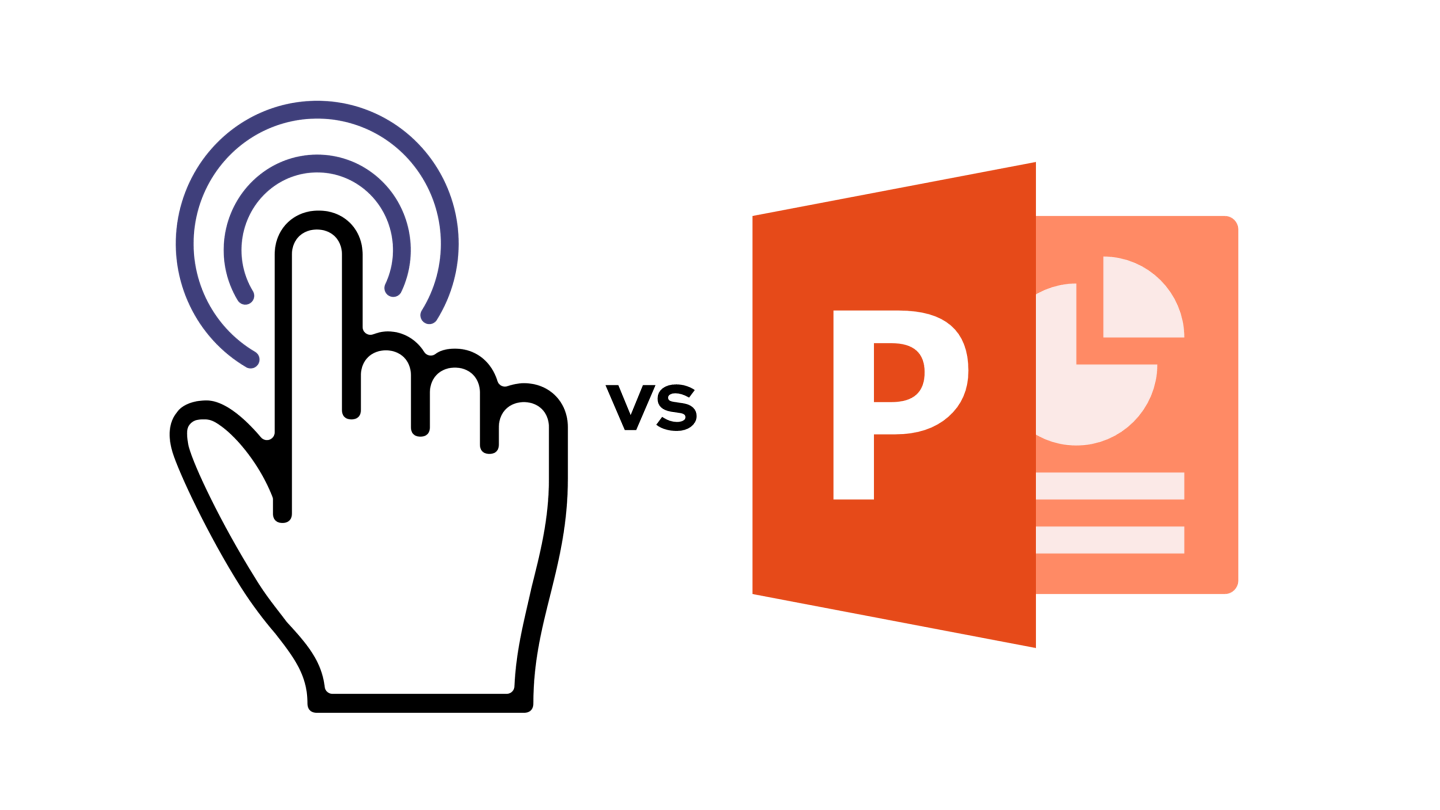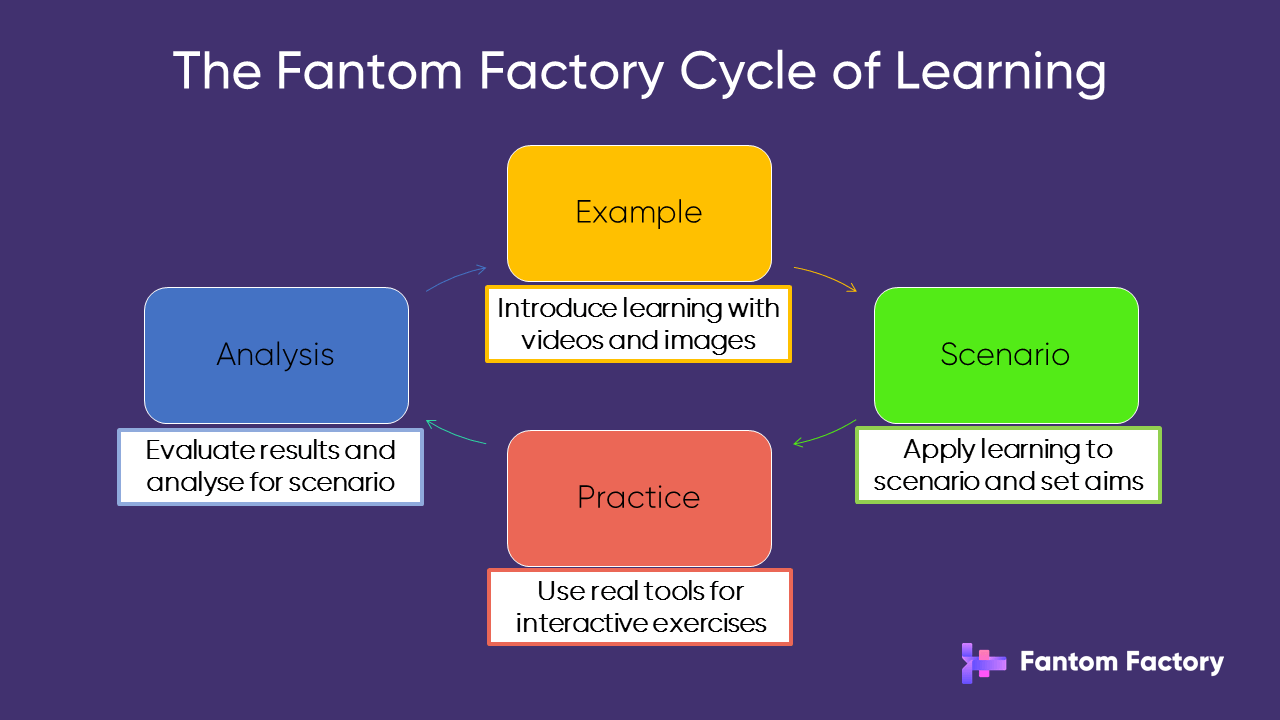eLearning vs Online-Training
Published on 09 Sep 2020 by Emma Eynon

In our modern age environment of remote working, international digital services, (and somehow, seemingly less time in the day), it's no surprise that training online is growing in popularity. Web training, eLearning, distance learning, online training, and even digital training are all terms used to apply to various forms of training. However, without any global standards attached to these names, how do you know what you're buying?
Common types of training methods
Consider the various types of training available.
A popular choice is the presentation format, using perhaps Ms PowerPoint, videos, and images; which make it easy to present information.
A more practical method, or "learning by doing" allows for experimentation and often provides feedback on how well you have picked up the new learning. Think of a pottery, or cooking class for example - you know you're learning because you can see or taste the difference!
Interactive exercises, such as group discussion and role playing, bring a practical element into a wider scope of group or face-to-face training.
The learning cycle
While various forms of a learning cycle have been published around the internet, here is the cycle we have adopted at Fantom Factory. It is generally accepted that including more stages from this learning cycle during training, results in a higher level of knowledge and skill retention.
Firstly, new information is introduced, perhaps in a demo or a presentation. This information is then applied to a scenario, for contextual understanding. Ideally, the student should have the opportunity to experiment, with an interactive or practical exercise, followed by the very important feedback stage of how they performed. The result of this application of the learning is then analysed, reinforcing any further lessons learned from this.

This style of learning may be classed as "consolidation training", where each stage of the learning cycle builds on the previous one, and for each new learning point.
How does this apply to the internet?
Presentations are extremely commonplace on the internet, being easy to set up and no further involvement required. Examples may include webcasts, slide decks, videos and even lengthy instruction sheets. (Although one might argue these are not really training but rather presentation of information, unless they're combined with other forms!)
Presentations are extremely commonplace on the internet, being easy to set up and requiring no further involvement. Examples may include webcasts, slide decks, videos and even lengthy instruction sheets. (Although one might argue that presenting information alone is not truly training!)

Video conference calls are growing much more popular, aiming to mimic the classroom environment. More collaborative tools are now becoming available, allowing attendees to share notes, images and speak within the group. These can be notoriously difficult to provide the feedback needed for monitoring each student's progress. They are also very dependent on scheduling and availability, not to mention a reliable internet connection!
So come on then, what's eLearning?!
While eLearning is also often applied to the broad spectrum of training delivery methods, those in the industry actually refer to this as using a true digital learning platform. It's not just delivered electronically over the internet, but also composed entirely in a digital learning format. Think of higher education workbooks and lectures, all combined into a website form.
A well designed digital learning platform may use all of the training methods outlined above.
Fantom Factory eLearning
At Fantom Factory, we are passionate about the quality of the training experience we deliver.
To that end, we have designed a truly interactive learning platform, that provides engaging and high quality multi-media material. Add to that, our students also "learn by doing", whether this is learning how to use SkySpark or perhaps how to program in Axon!
Why choose eLearning?
- Any time, any place! Delivered over the internet to your chosen device.
- Cost effective. Affordable training, whether for one student, or one hundred.
- Immediately available. Buy a course and start straight away - no scheduling.
- Efficient and effective. No fillers, no energisers, and no time wasting.
- No expenses. Forget travel and hotel bills, and take less time out of work!
- Self-paced. Take the time you need to understand - with no peer pressure.
- Standardised instruction. No more russian roulette with instructors.
- Interactive engagement. Experience all the content, no hiding at the back!
- Performance tracking. Realtime feedback on your progress and achievements.
- Options. So many options! Language, sound and displays, choose your own style.
So which is better? eLearning or online training?
Neither method is better than the other. It depends entirely on your training requirements to know which suits best. Regardless of this, the quality of the training should be a very important consideration.
If you are looking for training that offers:
- convenience
- value for money
- effectiveness
- global accessibility
- easy distribution for multiple seats
- more time back
And you want to learn SkySpark...
...then take a look at our available SkySpark eLearning courses, which are also available from our distribution and reselling partners